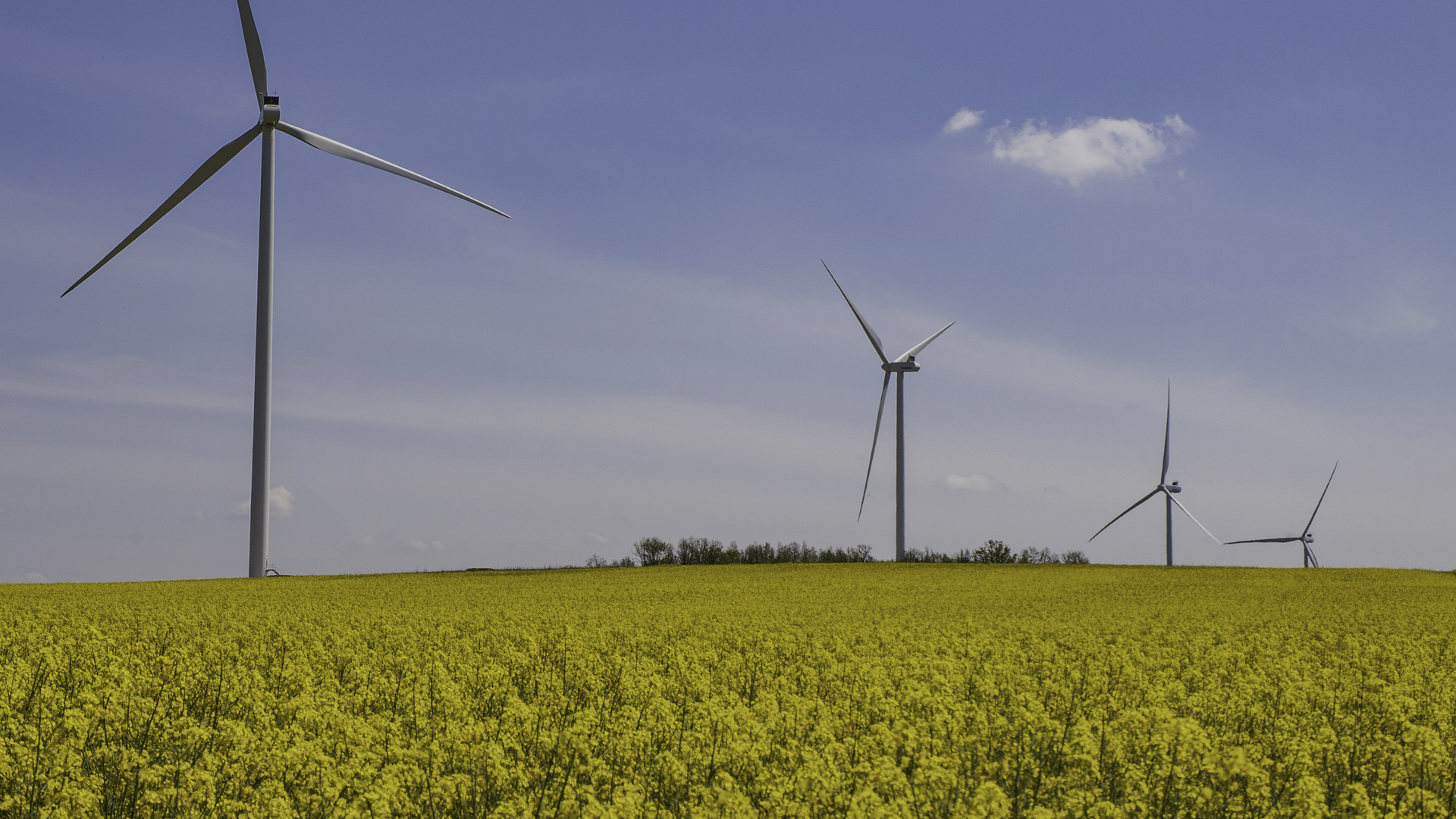05.05.2023 | Solar offensive forges ahead: 10-megawatt plant above Disentis
Large-scale alpine solar plant "Ovra Solara Magriel" in the starting blocks
Axpo is to build its next alpine solar plant in the Disentis ski resort in the canton of Graubünden. In future, it will supply the mountain railways in the Disentis ski area entirely with green electricity. With the project, Axpo is rapidly moving forward with the solar offensive that was launched last fall and with the expansion of urgently needed winter power.
High above Surselva at approximately 2100 metres a.s.l. in the Canton of Grisons, Axpo will build a 10-megawatt plant on a surface of 80,000 m2 near the La Muotta peak. The plant will generate 17 gigawatt-hours of electricity, which could theoretically be equivalent to the consumption of 4,000 Swiss households. A first section of the plant is scheduled go into operation in 2025.
Using existing infrastructure – protecting untouched alpine landscapes
The sunny region above the fog line is ideal for harnessing the power of the sun to generate winter power. The area is a popular winter sports and hiking region with infrastructure that can be easily integrated into the projected power plant and, hence, with minimal intervention in the landscape. The mountain cable cars in the Disentis ski area can meet their annual power requirements for operation entirely with local solar power. At the same time, the existing infrastructure enables efficient connection to the power grid.
This concept functions well, as can be seen in the AlpinSolar project in the Glarus Alps. Axpo and IWB mounted solar panels on the Muttsee dam. The plant has been producing electricity since 2021. Latest assessments indicate that on average AlpinSolar generates up to five times more power during the winter as compared to plants in residential areas.
Hence, large alpine solar plants are a good solution for providing our country with power during the winter and reducing our dependency on imports from abroad.

Putting words into action
Under the recently launched solar offensive, Axpo plans to develop a capacity of 1.2 gigawatts by 2030. This corresponds to an annual production of 1.5 terawatt-hours and the yearly electricity consumption of 300,000 Swiss households. Ambitious, but doable.
The first official project "NalpSolar" is already in a more advanced stage. In Tavetsch, the construction of a 10-megawatt plant is in planning. The plant will be built next to the Nalps reservoir on alpine pasture land. While cows graze in the shade of the solar panels, power is produced overhead. As a result, the land area can be used dually, a concept also referred to as Agri-PV. Meteorological data is being collected at the location since March 2023,.
With "Ovra Solara Magriel" the next project is in the starting blocks.
New regulatory framework conditions must be defined on a long-term basis
After 2025, the construction of additional alpine plants could become difficult. The Federal Parliament has established good conditions under the Emergency Federal Act for short-term provision of reliable power supply in winter. However, the entitlement to a simplified approval process and additional subsidies will only remain in force until the end of 2025 or until a total annual production of 2 TWh has been realised.
Be it alpine plants or large-scale ground-mounted plants in residential areas: The energy transition can only gain ground if the development of renewable energies is advanced on all fronts. This makes reliable framework conditions that enable long-term planning security for the renewable energies all the more important. Above all, significantly more momentum must be created in the development of domestic electricity capacities.
Old hand
Thirty years ago, the Axpo predecessor NOK launched the "1-megawatt solar chain" project to promote renewable energies. In 1993, NOK and its partners built the largest solar power plant of the time in the Swiss Alps above Disentis near Caischavedra. Capacity: 100 kilowatts – a fraction of what modern large-scale plants produce today. However, at that time the plant made headlines and still faithfully performs its services to this day. The plant is located just a few metres linear distance from the location of the future 10-megawatt plant "Ovra Solara Magriel".

